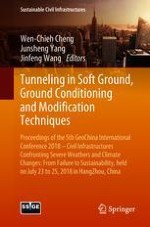2019 | Buch
Tunneling in Soft Ground, Ground Conditioning and Modification Techniques
Proceedings of the 5th GeoChina International Conference 2018 – Civil Infrastructures Confronting Severe Weathers and Climate Changes: From Failure to Sustainability, held on July 23 to 25, 2018 in HangZhou, China
herausgegeben von: Prof. Dr. Wen-Chieh Cheng, Junsheng Yang, Jinfeng Wang
Verlag: Springer International Publishing
Buchreihe : Sustainable Civil Infrastructures
